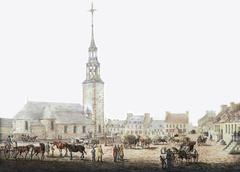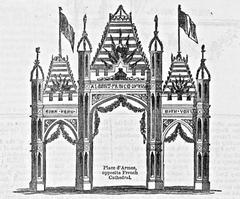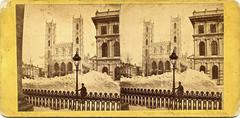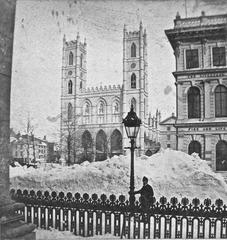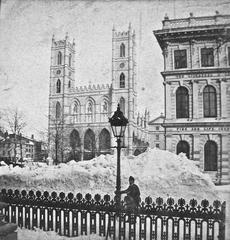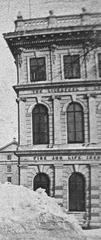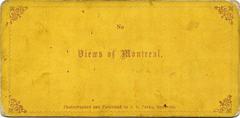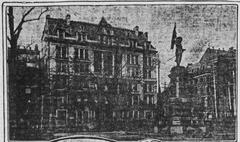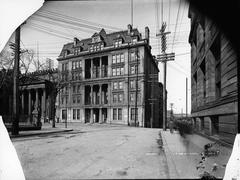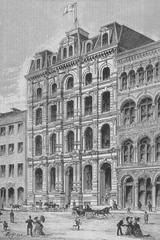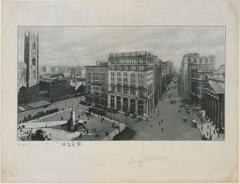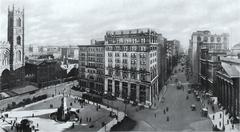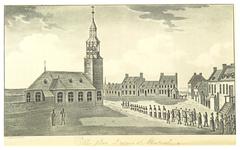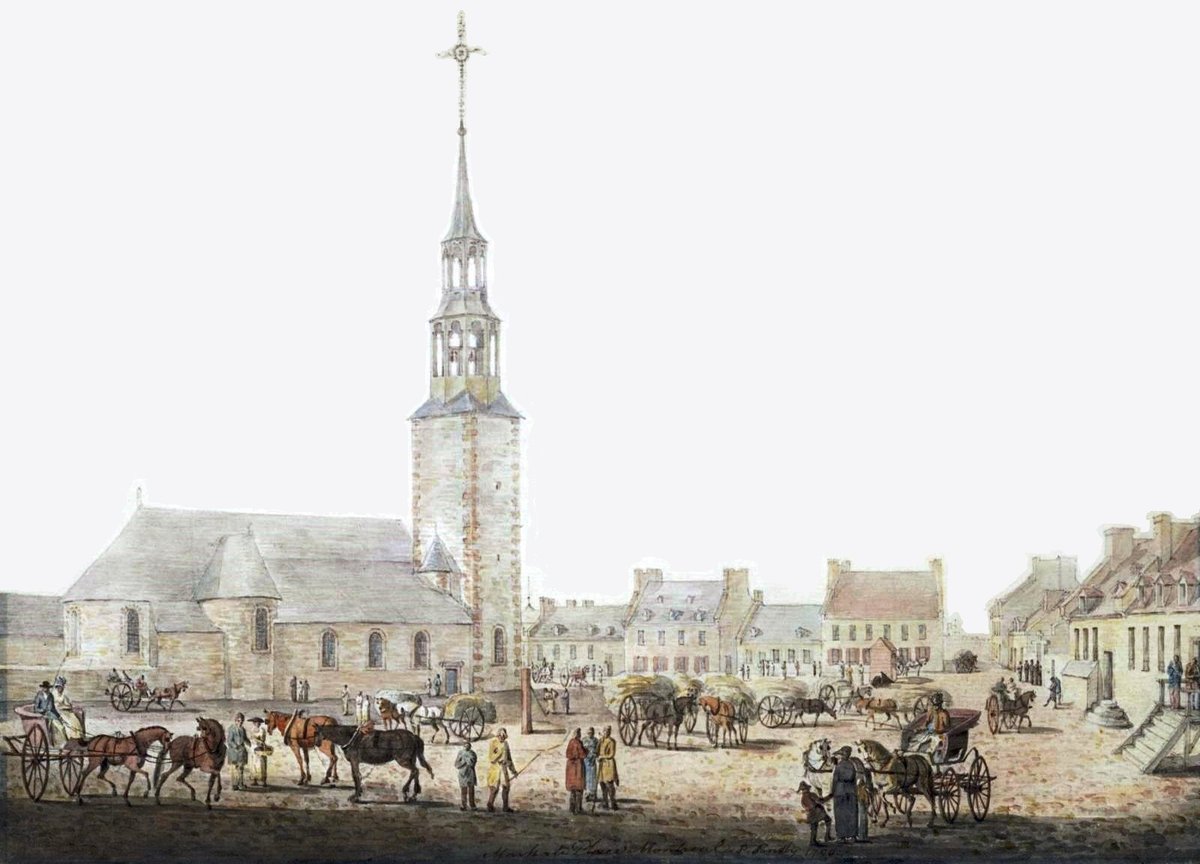
Place d’Armes Montreal Visiting Hours, Tickets, and Tourist Guide
Date: 14/06/2025
Introduction: History and Significance
Place d’Armes in Montreal is a living symbol of the city’s rich heritage, blending over three centuries of history with a vibrant urban atmosphere. Located in the heart of Old Montreal, this public square invites visitors to experience a tapestry of colonial origins, architectural wonders, and diverse cultural narratives. Established in 1693 as Place de la Fabrique and renamed Place d’Armes in 1721, it served as a military parade ground and communal gathering point, reflecting its central place in Montreal’s early defense and civic life (Wikipedia; Global News).
Today, Place d’Armes is surrounded by iconic landmarks such as the Gothic Revival Notre-Dame Basilica, the neoclassical Bank of Montreal Head Office, and the pioneering New York Life and Aldred Buildings, each representing a chapter in Montreal’s architectural evolution (The Design Gesture; Lonely Planet). At its center stands the Monument à Maisonneuve, commemorating the city’s founder and connecting visitors to Montreal’s enduring spirit of resilience and community.
Place d’Armes offers both a historical journey and practical amenities, including year-round accessibility, seasonal events, guided tours, and proximity to other major attractions like the Saint-Sulpice Seminary and Old Port. Whether you’re a history buff, architecture lover, or casual traveler, understanding its history, layout, and visitor information is essential for an enriching experience (Time Out Montreal; Montreal Tourism).
Historical Overview
17th–18th Centuries: Foundations
Place d’Armes began as Place de la Fabrique in 1693, developed by the Sulpicians in front of the original Notre-Dame Church. By 1721, it was renamed Place d’Armes to serve as a military assembly point, reflecting both defense and community functions in early Montreal (Wikipedia).
18th–19th Century: Transformation
After the British conquest in 1760, Place d’Armes continued as a focal point for military and civic events. The first public monument, a bust of King George III, was installed in 1773 but later defaced during the Revolutionary War (Global News). The square also served as a hay and wood market until 1813. Following the demolition of the original church, Place d’Armes transitioned into an open public space.
Victorian Era and Urban Development
By the mid-19th century, Place d’Armes was redesigned as a Victorian garden, with its current dimensions established by 1850. The Notre-Dame Basilica (1829), Bank of Montreal Head Office (1847), New York Life Building (1888), and Aldred Building (1931) rose around it, marking Montreal’s rapid urban growth (The Design Gesture).
Civic and Transportation Hub
In the early 20th century, Place d’Armes became a key node for Montreal’s tramway system. The construction of Art Deco public restrooms during the Great Depression reflected the city’s modernization efforts (Wikipedia).
Archaeological Discoveries and Restoration
Between 2009 and 2011, archaeological digs uncovered remnants of a cemetery and the original church’s foundations. A $15.5 million restoration revitalized the square, enhancing accessibility and restoring the Monument à Maisonneuve (fr.wikipedia).
Monuments and Memory
The Monument à Maisonneuve, unveiled in 1895, honors the city’s founder. In recent years, the square has evolved to reflect changing perspectives, including the removal of controversial plaques.
Architectural Significance
Place d’Armes is a showcase of Montreal’s architectural evolution, with buildings representing nearly every major era of the city’s history (The Design Gesture; Lonely Planet).
Notable Landmarks
- Notre-Dame Basilica: A Gothic Revival masterpiece (1829) with intricate woodwork and vibrant stained glass. Its deep blue ceiling and 7,000-pipe Casavant organ are highlights (Lonely Planet).
- Vieux Séminaire de Saint-Sulpice: Montreal’s oldest structure (1684–1687), visible from the square (MTL.org).
- Bank of Montreal Head Office: A neoclassical building modeled after the Pantheon, symbolizing Montreal’s financial power (MTL.org).
- New York Life Building: The city’s first skyscraper (1888), in Romanesque Revival style.
- Aldred Building: Art Deco limestone tower (1931), with stepped setbacks and an ornate lobby (The Design Gesture).
- 500 Place d’Armes: A modernist glass and steel structure representing ongoing architectural change.
Public Art and Urban Design
- Monument à Maisonneuve: Central fountain and statue featuring historical figures and bas-reliefs (A View on Cities).
- Street Life: Flower merchants, street vendors, and departure points for calèche rides contribute to the lively atmosphere (Montreal Visitors Guide).
Visiting Place d’Armes: Practical Information
Visiting Hours and Admission
- Place d’Armes Square: Open 24/7, year-round; free entry.
- Notre-Dame Basilica: Open daily 9:00 AM–4:30 PM; admission ~CAD 10. Extended hours for special events.
- Bank of Montreal Museum: Monday–Friday, 10:00 AM–4:00 PM; free entry.
Getting There
- Metro: Place-d’Armes Metro station (Orange Line) is steps away.
- Bus & Tram: Several lines serve the area.
- Parking: Paid garages within a short walk; limited street parking.
- Walking & Cycling: Pedestrian- and cyclist-friendly; bike racks available.
Accessibility
- Wheelchair accessible with ramps and smooth walkways.
- Notre-Dame Basilica and other major sites offer accessible entrances and facilities.
Amenities
- Restrooms: Inside Notre-Dame Basilica and nearby establishments.
- Wi-Fi: Available in many surrounding businesses.
- Tourist Info: Old Montreal tourist office is a short walk away.
Travel Tips
- Visit early or late in the day for fewer crowds and best photography light.
- Guided tours offer rich historical context; book in advance for popular events.
- Wear comfortable shoes for cobblestone streets; bring weather-appropriate attire.
Cultural Significance
Place d’Armes has always been a crossroads of Montreal’s history, hosting military parades, markets, and public gatherings since the 17th century (Nomadic Matt). The square’s architecture embodies Montreal’s multicultural identity, blending French colonial, British, and North American influences. Today, Place d’Armes remains a hub for festivals, street performances, and public art, firmly anchored in the city’s living heritage (Lonely Planet; The Design Gesture).
Key Attractions & Activities
- Notre-Dame Basilica: Renowned for its interior and multimedia “AURA” light show (Destination.com).
- Monument à Maisonneuve: Central statue commemorating Montreal’s founder.
- Bank of Montreal Museum: Traces Canada’s financial history.
- Guided Walking Tours: Explore Old Montreal’s history, architecture, and hidden courtyards.
- Rooftop Dining: Terrasse Place D’Armes and other venues offer panoramic city views (The Rooftop Guide).
- Seasonal Events: Open-air concerts, art installations, and festive markets (Montreal Festivals).
Practical Visitor Tips
- Best Times: Early morning or late afternoon for tranquility and golden-hour lighting.
- Recommended Seasons: Late spring to early fall for outdoor events and terraces.
- Language: French is primary; English widely understood.
- Safety: Well-patrolled and safe, but be mindful of belongings during crowded events.
- Family-Friendly: Stroller and wheelchair accessible; nearby attractions for all ages.
Frequently Asked Questions (FAQs)
Q: What are the Place d’Armes visiting hours?
A: The square is open 24/7. Notre-Dame Basilica is generally open 9:00 AM–4:30 PM.
Q: Is there an entrance fee?
A: Access to the square is free. Notre-Dame Basilica and some experiences require a ticket.
Q: Are guided tours available?
A: Yes, both guided and self-guided tours are widely offered.
Q: How do I get there?
A: The Place-d’Armes Metro station (Orange Line) is the nearest stop.
Q: Is Place d’Armes accessible for visitors with disabilities?
A: Yes, the square and most major attractions are wheelchair accessible.
Visuals and Media
Enhance your visit with high-quality images, virtual tours, and interactive maps available through local tourism websites. For an immersive preview, explore the official virtual tour of Old Montreal.
Sustainable Tourism Recommendations
- Support local businesses and artisans.
- Respect heritage sites and public art.
- Use public transit or walk to reduce your environmental footprint.
Summary & Final Tips
Place d’Armes is a microcosm of Montreal’s layered history and dynamic present. Its central location, free access, and vibrant atmosphere make it a top destination for anyone visiting Montreal. Maximize your experience by visiting during milder months, joining a guided tour, and exploring nearby attractions. Show respect for the site’s heritage while enjoying the lively energy that makes Place d’Armes the beating heart of Old Montreal (Wikipedia; The Design Gesture; Time Out Montreal; Montreal Festivals).
For up-to-date guides, self-guided audio tours, or event alerts, download the Audiala app and follow Montreal’s tourism resources (Montreal Tourism).
References
- Wikipedia: Place d’Armes
- Global News: Place d’Armes – Old Montreal’s Public Square
- The Design Gesture: Architecture of Montreal
- Lonely Planet: Place d’Armes, Old Montreal
- Time Out Montreal: Old Montreal Guide
- Montreal Tourism: Place d’Armes
- Montreal Festivals: Place d’Armes Music Zone
- Audiala: Explore Montreal with Audiala
- The Rooftop Guide: Rooftop Bars in Montreal
- Destination.com: Notre-Dame Basilica of Montreal
- Montreal Visitors Guide: Place d’Armes
- A View on Cities: Place d’Armes
- Nomadic Matt: Montreal Guide
- ASME Tours: Montreal
- fr.wikipedia: Place d’Armes (Montréal)
